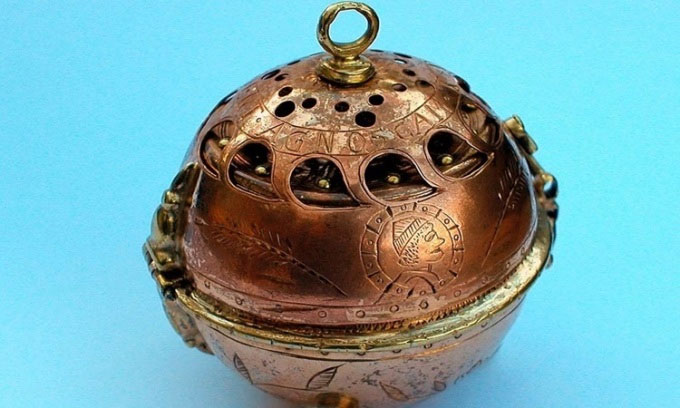The oldest working clock in the world
The small globe-shaped 1505 watch in gold-plated bronze is a combination of German engineering and Eastern identity.
In 1987, during a trip to London, an apprentice watchmaker came across a rare item in an antique shop. Hidden away in a box filled with old metal miscellaneous objects is an interesting watch. This small bronze sphere can be opened, revealing a smaller hemisphere inside. On the top of the hemisphere is a dial engraved with Roman and Arabic numerals, a feature of famous watch designs that were popular in 16th-century Germany.

The 1505 watch is extremely exquisitely crafted. (Photo: Wikimedia).
Unaware of the significance of the find, the apprentice resold the watch, starting a chain of transactions that eventually saw the piece fall into the hands of a private collector in 2002. Importance and credibility, then, The reliability of the new watch became clear. Called the 1505 Clock or the 1505 Amber Apple Watch , this extraordinary artifact is believed to be the oldest working clock in the world, according to Amusing Planet .
The 1505 clock is the handicraft of the famous locksmith and clockmaker from Nuremberg Peter Henlein, one of the pioneers in the development of small portable decorative clocks. These small watches are often worn as pendants or attached to clothing, both for decoration and to tell the time.
Henlein was born and raised in Nuremberg. The son of a blacksmith, he quickly took up the profession of locksmith. At that time, locksmiths were among the few craftsmen who had the skills and tools to enter the new field of watchmaking. In 1504, after an unfortunate accident that led to the death of a locksmith friend, Henlein took refuge in the Franciscan monastery in Nuremberg and lived there until 1508. Behind the monastery walls, Henlein found An environment rich in scientific and astronomical knowledge. Most likely, during his time in hiding, Henlein became more and more knowledgeable about watchmaking, even creating masterpieces like the 1505 watch.
Researchers were able to determine the year the watch was created because Henlein engraved the date and his initials on the inside of the watch. In those days, locksmiths were not allowed to put their names on the objects they created, so the inventor had to hide his initials in a crude engraving less than a millimeter high, visible only through a watch. large magnifying glass. In addition to the initials of his own name and the name of the watch case, Henlein also engraved the words in Latin meaning "1505 - Time will elude me (Henlein), but I (the watch) will recognize the exact time." ".
This watch was mainly born thanks to the ability to miniaturize the torsion pendulum and elastic spring mechanism to an unprecedented scale that Henlein achieved, a new technological achievement of the time. By turning watches into portable body-worn timekeeping devices, Henlein not only personalizes watches but also changes the way people measure and manage time.
During his lifetime, Henlein created many clocks and devices, including the small drum-shaped clock called the Nuremberg egg. He also built a clock tower for Lichtenau castle in 1541 and crafted many sophisticated scientific instruments. There are only two amber apple watches left in the world. One is the 1505 Clock in a private collection, the other is the Melanchthon Amber Apple Clock owned by the Walters Art Museum in Baltimore since 1530.
- 14 oldest ancient artifacts in the world
- Discover the oldest Sun watch in Egypt
- The oldest man in the world died, aged 112 years
- The inventions help see the time before the clock
- 10 oldest antiquities in the world
- Find the oldest stone ax in the world
- The mobile atomic clock is one trillionth of a second error
- Alarm clock history
- 11 interesting things you can know about the Big Ben clock tower
- Video: The world's most rude alarm clock
- The most accurate atomic clock in the world
- America invented the world's most accurate watch
 'Fine laughs' - Scary and painful torture in ancient times
'Fine laughs' - Scary and painful torture in ancient times The sequence of numbers 142857 of the Egyptian pyramids is known as the strangest number in the world - Why?
The sequence of numbers 142857 of the Egyptian pyramids is known as the strangest number in the world - Why? History of the iron
History of the iron What is alum?
What is alum?